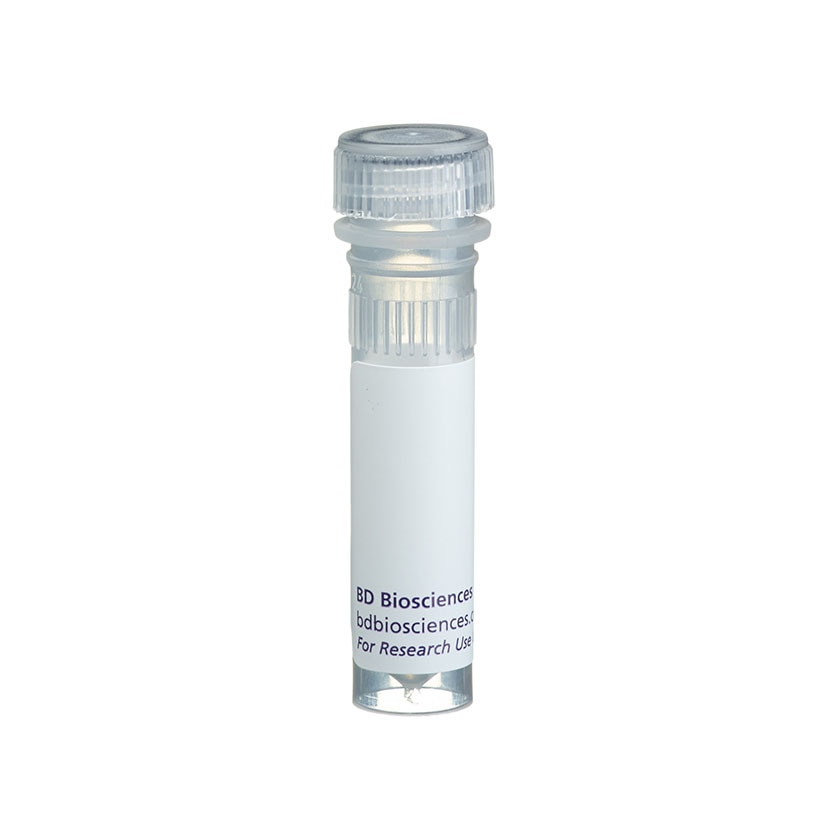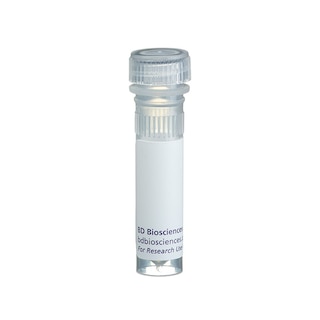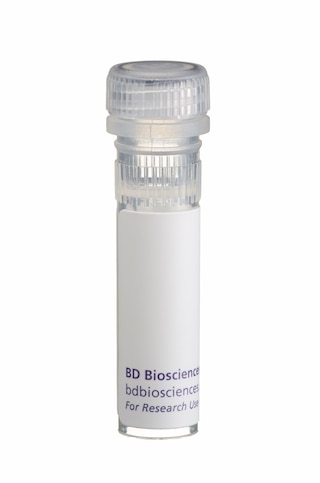Old Browser
This page has been recently translated and is available in French now.
Looks like you're visiting us from {countryName}.
Would you like to stay on the current country site or be switched to your country?


Regulatory Status Legend
Any use of products other than the permitted use without the express written authorization of Becton, Dickinson and Company is strictly prohibited.
Preparation And Storage
Product Notices
- Since applications vary, each investigator should titrate the reagent to obtain optimal results.
- Sodium azide is a reversible inhibitor of oxidative metabolism; therefore, antibody preparations containing this preservative agent must not be used in cell cultures nor injected into animals. Sodium azide may be removed by washing stained cells or plate-bound antibody or dialyzing soluble antibody in sodium azide-free buffer. Since endotoxin may also affect the results of functional studies, we recommend the NA/LE (No Azide/Low Endotoxin) antibody format, if available, for in vitro and in vivo use.
- Please refer to http://regdocs.bd.com to access safety data sheets (SDS).
- Please refer to www.bdbiosciences.com/us/s/resources for technical protocols.
Companion Products


The MABTNF-A5 antibody, formerly known as 5N, reacts with human tumor necrosis factor, TNF (aka, TNF-α and TNFSF2). TNF is a multifunctional cytokine involved in a variety of immune and inflammatory responses including hemorrhagic necrosis of tumors, septic shock, fever and autoimmune diseases. TNF can regulate the growth and differentiation of many different cell types. It is produced by different activated cell types including macrophages, T lymphocytes, NK cells, dendritic cells, endothelial cells, peripheral blood leukocytes, osteoblasts, astrocytes, mast cells, Kupffer cells, smooth muscle cells, fibroblasts and certain tumor cells. TNF exists in two biologically active forms, i.e., transmembrane and soluble forms. Upon activation, cells express transmembrane TNF glycoproteins that associate as homotrimeric complexes. After enzymatic cleavage, the extracellular region of membrane TNF sheds as a soluble homotrimer. The biologically active form of TNF has been reported to be a trimer. The immunogen used to generate the MABTNF-A5 hybridoma was purified recombinant human TNF. This is an extraordinarily potent neutralizing antibody that is reportedly also useful for ELISA measurements of human TNF.
Development References (5)
-
Black RA, Rauch CT, Kozlosky CJ, et al. A metalloproteinase disintegrin that releases tumour-necrosis factor-alpha from cells. Nature. 1997; 385(6618):729-733. (Biology). View Reference
-
Hogan MM, Vogel SN. Production of tumor necrosis factor by rIFN-gamma-primed C3H/HeJ (Lpsd) macrophages requires the presence of lipid A-associated proteins. J Immunol. 1988; 141(12):4196-4202. (Biology). View Reference
-
Kriegler M, Perez C, DeFay K, Albert I, Lu SD. A novel form of TNF/cachectin is a cell surface cytotoxic transmembrane protein: ramifications for the complex physiology of TNF. Cell. 1988; 53(1):45-53. (Biology). View Reference
-
Petyovka N, Lyach L, Voitenok NN. Homologous ELISA for detection of oligomeric human TNF: properties of the assay. J Immunol Methods. 1995; 186(2):161-170. (Clone-specific: ELISA). View Reference
-
Smith RA, Baglioni C. The active form of tumor necrosis factor is a trimer. J Biol Chem. 1987; 262(15):6951-6954. (Biology). View Reference
Please refer to Support Documents for Quality Certificates
Global - Refer to manufacturer's instructions for use and related User Manuals and Technical data sheets before using this products as described
Comparisons, where applicable, are made against older BD Technology, manual methods or are general performance claims. Comparisons are not made against non-BD technologies, unless otherwise noted.
For Research Use Only. Not for use in diagnostic or therapeutic procedures.
Report a Site Issue
This form is intended to help us improve our website experience. For other support, please visit our Contact Us page.